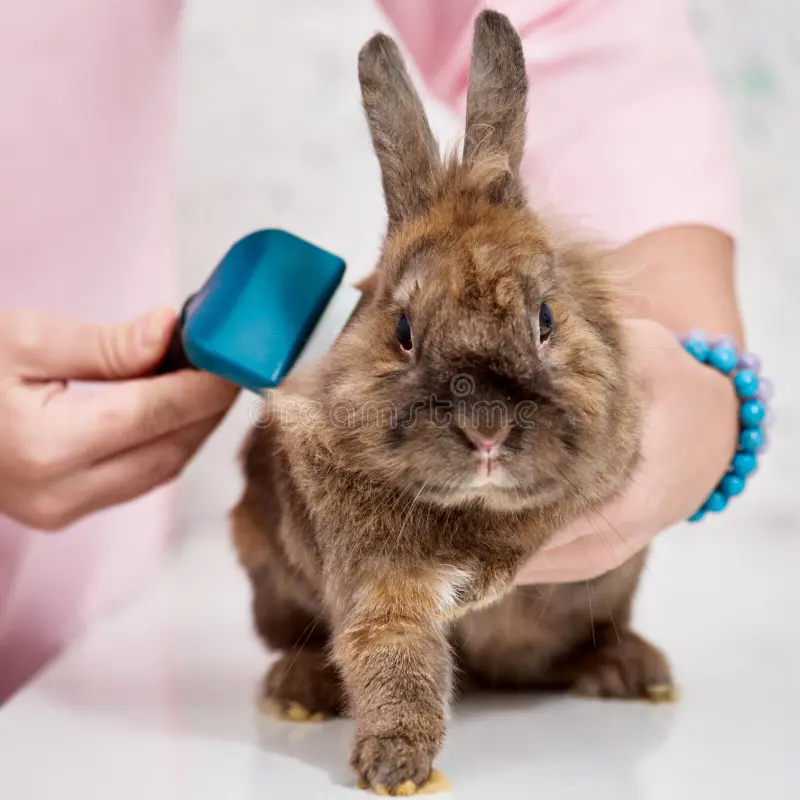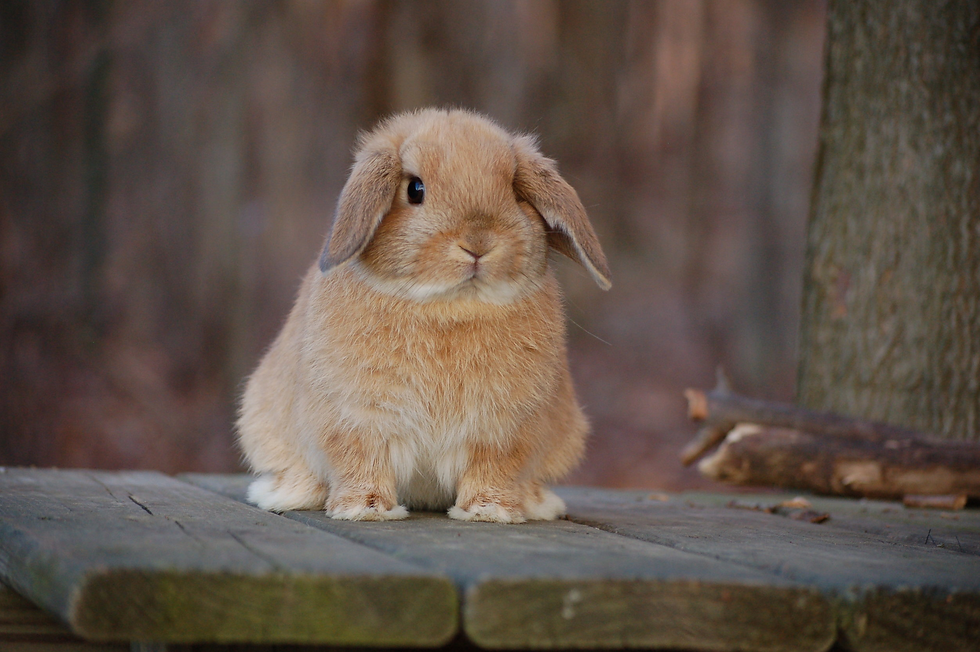Rabbit 101: Your First Hop Into Bunny Care 🐰
- Iqra Shaikh
- Jun 18
- 3 min read
Updated: 5 days ago
Rabbits are gentle, social, and surprisingly expressive pets. With the right care, they’ll hop right into your heart (and maybe even your lap!). Whether you’re a first-time bunny parent or just considering adoption, this guide has you covered from whiskers to tail.
📌 What’s Inside:
🐇 Choosing the Right Rabbit
Rabbits come in all shapes, sizes, and personalities:
Dwarf rabbits are small, playful, and full of energy.
Lop-eared rabbits tend to be more laid-back and cuddlier.
Choose a rabbit based on temperament, size, and the care they’ll need — and be prepared for a commitment of 8–12 years.
🏡 Habitat Setup
Your rabbit’s environment plays a big role in their happiness.
Use a large indoor enclosure or rabbit-proofed area.
Include soft bedding, a litter box, hay corner, and hideouts.
Avoid wire-bottom cages — they can injure sensitive rabbit feet.

🥗 Diet & Nutrition
A balanced bunny diet should be:
80% Hay (timothy, orchard grass)
Fresh vegetables (e.g., romaine, parsley, mint)
Pellets (as a supplement, not the main diet)
Clean water at all times
Avoid sugary fruits, iceberg lettuce, and anything processed.

🐾 Exercise & Enrichment
Rabbits aren’t lazy! They need 3–4 hours of free-roam time daily.
Set up a safe space for hopping and exploring.
Add toys like cardboard boxes, tunnels, and chew sticks.
Mental stimulation is as important as physical movement!
✂️ Grooming & Hygiene
Keep your bunny clean and comfy:
Brush weekly (daily for long-haired breeds).
Trim nails every few weeks.
Never bathe rabbits — they can go into shock.
Monitor for dirty fur or signs of mats.

🚑 Health Signs to Watch
Keep an eye out for:
No droppings for 12+ hours
Loss of appetite
Runny eyes or nose
Tilting head or lethargy
Always find a rabbit-savvy vet for regular checkups.
🧠 Rabbit Behavior Basics
Rabbits use body language to communicate:
Binkies (happy jumps) = joyful rabbit!
Thumping = upset or sensing danger
Chinning = marking territory
Flopping over = relaxed and safe
Build trust through quiet time, treats, and gentle handling.
🐾 Final Thoughts
Rabbits are more than just adorable pets—they’re intelligent, social, and full of charm. With the right care and daily interaction, your bunny will thrive and become a loving part of your family. 🐰💛
💡 Fun Fact
Rabbits can be litter-trained just like cats! With a bit of patience, they’ll choose a corner and consistently use it—making indoor bunny care surprisingly easy.
📝 Pro Tip
Rabbits love to chew — on everything!
Use cord protectors, keep houseplants out of reach, and offer safe chew toys like untreated wood or cardboard rolls to prevent damage and boredom.
✅ Summary
Rabbits are intelligent, affectionate, and full of personality — but they need more than just a cute cage. With the right setup, daily care, and plenty of love, your rabbit can live a long, joyful life by your side.
❓ Quick FAQs for New Rabbit Owners
1. Do rabbits need to live indoors or outdoors?
Rabbits can live both indoors and outdoors, but indoor housing is generally safer from predators, weather, and parasites. If kept outdoors, they need a secure and spacious hutch.
2. Can rabbits be litter trained?
Yes! Rabbits can learn to use a litter box—especially if they are spayed or neutered. Start by placing it where they naturally eliminate.
3. What should I feed my rabbit daily?
A rabbit’s diet should consist mostly of hay (80%), with fresh vegetables and a limited amount of pellets. Avoid iceberg lettuce and sugary fruits.
4. How often should I groom my rabbit?
Short-haired breeds need brushing weekly; long-haired rabbits like Angoras may need daily grooming to prevent mats and hairballs.
5. Do rabbits need toys and mental stimulation?
Absolutely! Bunnies are smart and curious. Offer cardboard boxes, tunnels, chew toys, and time outside their enclosure for mental and physical exercise.
👉Read next:
Also a hamster parent?
Check out our ultimate hamster care guide
Follow us on:


Comments